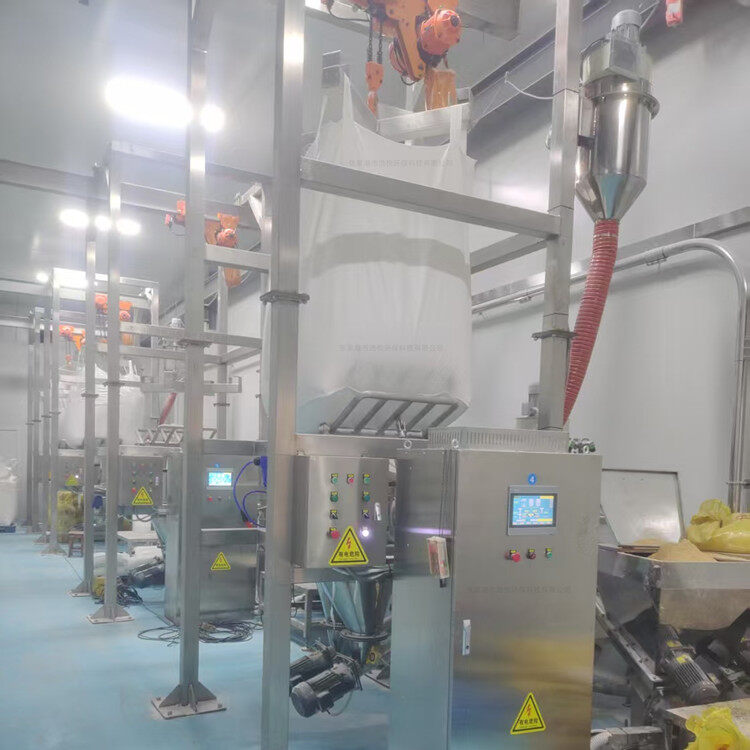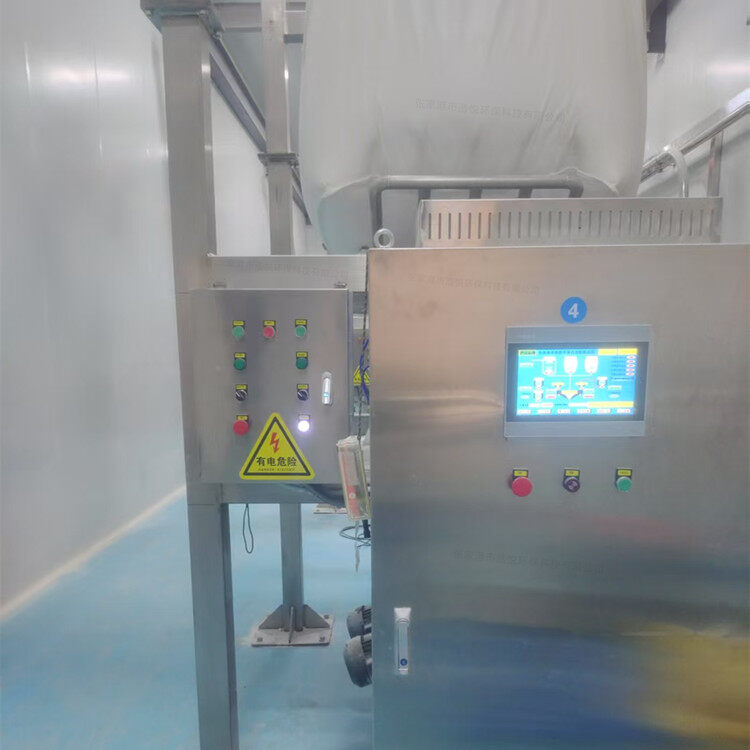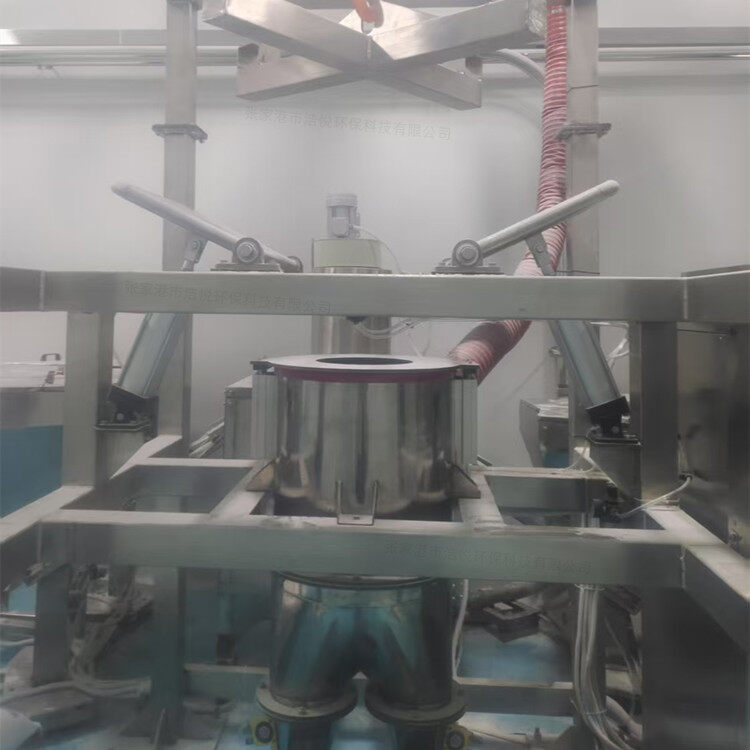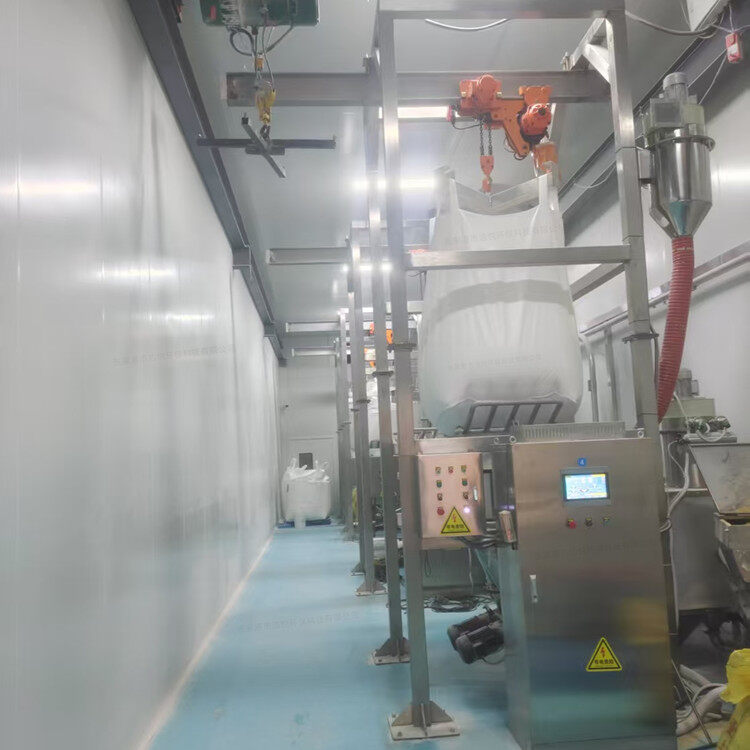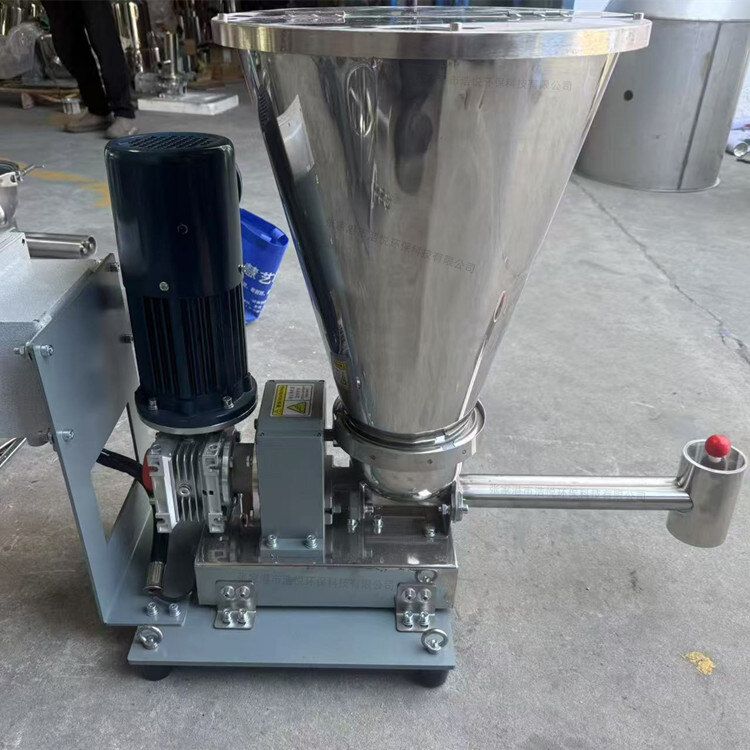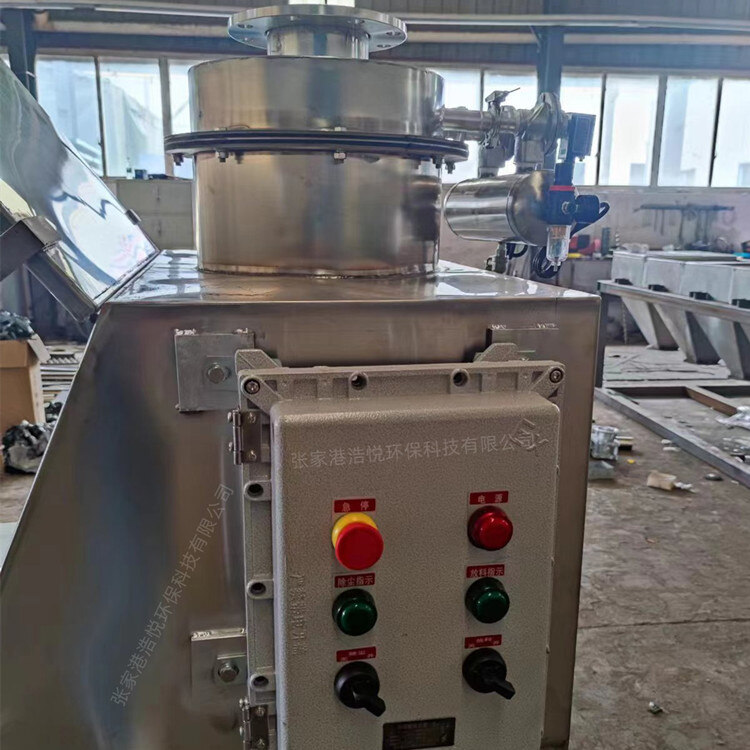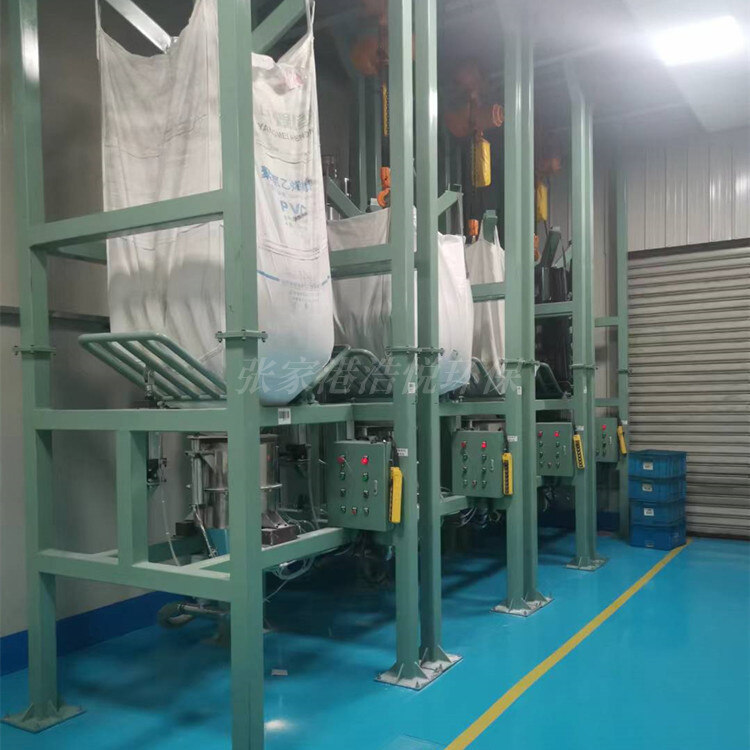- Introduction to automatic batching machine and fully automatic batching machine equipment
- The powder metering system tells you about the introduction of the mixing and drying machine
- 1000kg vacuum feeding machine
- Fully automatic small material batching system
- Research on Innovation of Automatic Weighing Machine Technology
- Design and operation of automatic batching system using PLC, industrial computer and frequency converter
Automatic metering and conveying of ton package feeding station
- Category:Ton bag unloading station
- Hits:121次
- Release Date:2025-06-27
- Share:
- Inquiry
- Details
In modern industrial fields such as chemical, pharmaceutical, food, and new energy, precise measurement and stable transportation of powder materials are key links in ensuring product quality and improving production efficiency. The powder metering and conveying equipment integrates advanced metering and conveying technologies to achieve precise control of the entire process from storage, metering to conveying of powder materials, effectively solving the problems of low accuracy, poor efficiency, and dust pollution in traditional manual operations. It has become an indispensable core equipment in industrial production.
1、 Equipment working principle
The working principle of powder metering and conveying equipment is based on the utilization of the physical properties of powder, combined with principles of mechanics, electricity, etc. to achieve metering and conveying. The measurement process mainly adopts two methods: weighing measurement or volumetric measurement. Weighing measurement uses high-precision weighing sensors to monitor real-time changes in material weight, convert weight signals into electrical signals, and calculate material flow rates after processing by the control system; Volumetric metering uses devices such as rotary valves and screw pumps to transport materials according to a fixed volume, and controls the flow rate by adjusting the speed.
The conveying process mainly relies on two methods: pneumatic conveying and mechanical conveying. Pneumatic conveying utilizes the power of airflow to transport powder materials in pipelines through vacuum negative pressure or positive pressure; Mechanical conveying utilizes equipment such as screw conveyors and belt conveyors to achieve material displacement through mechanical motion. The equipment automatically adjusts the measuring and conveying speed and flow rate according to preset process parameters, ensuring that materials are accurately conveyed to the target position according to established requirements.
2、 Core structure composition
(1) Measurement unit
Weighing measuring device: composed of weighing platform, weighing sensor, signal processing module, and control system. Weighing sensors usually use resistance strain gauges or capacitance sensors, with an accuracy of up to 0.05% FS (full range). During the dynamic weighing process, the material continuously passes through the weighing platform, and real-time weight data is collected by sensors. After signal amplification and A/D conversion, it is transmitted to the control system, which adjusts the conveying equipment according to preset flow parameters to achieve accurate measurement.
Volumetric metering devices: Common types include rotary valve meters, screw metering pumps, and impeller feeders. The rotary valve gauge sends out the powder material in a fixed volume through the periodic rotation of the rotor; The screw metering pump uses the spiral motion of the screw to push materials, and controls the flow rate by adjusting the screw speed; The impeller feeder distributes materials quantitatively through the rotation of the impeller. The volumetric measuring device has a simple structure and easy maintenance, and is suitable for powder materials with good fluidity.
(2) Conveyor unit
Pneumatic conveying equipment
Vacuum conveying system: mainly composed of vacuum pump, suction nozzle, conveying pipeline, filter, and discharge valve. The vacuum pump generates negative pressure, the suction nozzle sucks the material into the pipeline, the filter separates the gas-solid mixture, and the clean air is discharged. The material enters the next process through the discharge valve. Vacuum conveying has the characteristics of no dust leakage and long conveying distance, and is commonly used in industries with high hygiene requirements such as food and pharmaceuticals.
Positive pressure conveying system: using compressed air as a power source, it consists of a sending tank, conveying pipeline, valve, and receiving device. Materials are transported along pipelines driven by compressed air, suitable for long-distance and high flow powder transportation, commonly used in industries such as chemical and building materials.
Mechanical conveying equipment
Spiral conveyor: It pushes materials forward through the rotation of spiral blades, and has the advantages of compact structure and good sealing. It is suitable for short distance transportation of powdery and granular materials, such as flour, cement, etc.
Belt conveyor: With the continuous operation of the belt, it can transport materials with high conveying capacity and stable operation. It is commonly used for horizontal or small angle inclined conveying of bulk powder materials.
(3) Control system
The control system is the core brain of powder metering and conveying equipment, usually composed of programmable logic controller (PLC), industrial computer (IPC), and human-machine interface (HMI). PLC is responsible for collecting sensor data, executing control algorithms, and driving execution mechanisms; Industrial computers are used for complex data processing, recipe management, and system monitoring; HMI provides operators with an intuitive interface for parameter settings, operational status display, and fault alarms. In addition, the system can also be connected to the factory production management system (MES) through network interfaces to achieve data sharing and remote monitoring.
3、 Typical application scenarios
(1) Pharmaceutical industry
In pharmaceutical production, powder metering and conveying equipment is used for precise metering and dust-free conveying of raw materials and excipients. For example, in the tablet production process, high-precision weighing measuring devices accurately mix various raw materials, and vacuum conveying systems tightly transport the materials to the mixing equipment to avoid cross contamination and comply with GMP (Good Manufacturing Practice) requirements, ensuring accurate drug composition and stable quality.
(2) Food industry
The food processing industry has extremely high requirements for hygiene and measurement accuracy. Powder metering and conveying equipment is widely used in the production processes of milk powder, seasonings, starch, etc. The equipment is made of food grade stainless steel material and transported in a fully enclosed manner to prevent dust from flying and foreign objects from entering. The volumetric measuring device precisely controls the amount of various ingredients added, such as in biscuit production, accurately measuring raw materials such as flour, sugar, milk powder, etc., to ensure consistency in product taste and quality.
(3) Chemical industry
In chemical production, powder metering and conveying equipment is used for the treatment of materials such as catalysts, pigments, and plastic particles. For flammable and explosive powder materials, the equipment is equipped with an explosion-proof pneumatic conveying system to ensure production safety. In the production of positive electrode materials for lithium batteries, the positive pressure conveying system accurately measures and delivers powdered raw materials such as lithium iron phosphate to the mixing equipment, ensuring the stability and consistency of battery performance.
(4) Building materials industry
In the building materials industry, such as cement and dry powder mortar production, powder metering and conveying equipment plays an important role. Large scale screw conveyors and belt conveyors have achieved large-scale transportation of materials such as cement, fly ash, and gypsum powder. Weighing measuring devices accurately control the ratio of each raw material to ensure product quality meets standards, while improving production efficiency and reducing labor intensity.
4、 Technological advantages and development trends
(1) Technical advantages
High precision measurement: Advanced measurement technology keeps material proportioning errors within a very small range, ensuring product quality stability.
High degree of automation: The entire process is automated, reducing manual intervention, lowering labor intensity, and improving production efficiency.
Good environmental performance: The fully enclosed characteristics of pneumatic conveying effectively prevent dust leakage, improve the working environment, and meet environmental requirements.
Strong flexibility: The conveying route and measurement parameters can be adjusted according to production needs, supporting simultaneous conveying and measurement of multiple materials.
(2) Development Trends
Intelligent upgrade: Introducing artificial intelligence and IoT technology to achieve equipment failure prediction, automatic calibration, and adaptive control.
Energy saving and environmental protection: Develop energy-saving conveying equipment and optimize system design to reduce energy consumption and operating costs.
Multi functional integration: Integrating functions such as metering, conveying, and mixing to reduce equipment footprint and improve overall system performance.
Safe and reliable: Strengthen explosion-proof and anti-static design to enhance the safety and reliability of equipment in hazardous environments.
Powder metering and conveying equipment plays an important role in modern industrial production due to its advanced technology and wide applicability. With the continuous innovation and development of technology, such devices will evolve towards greater intelligence, efficiency, and environmental friendliness, continuously empowering high-quality development in various industries.


